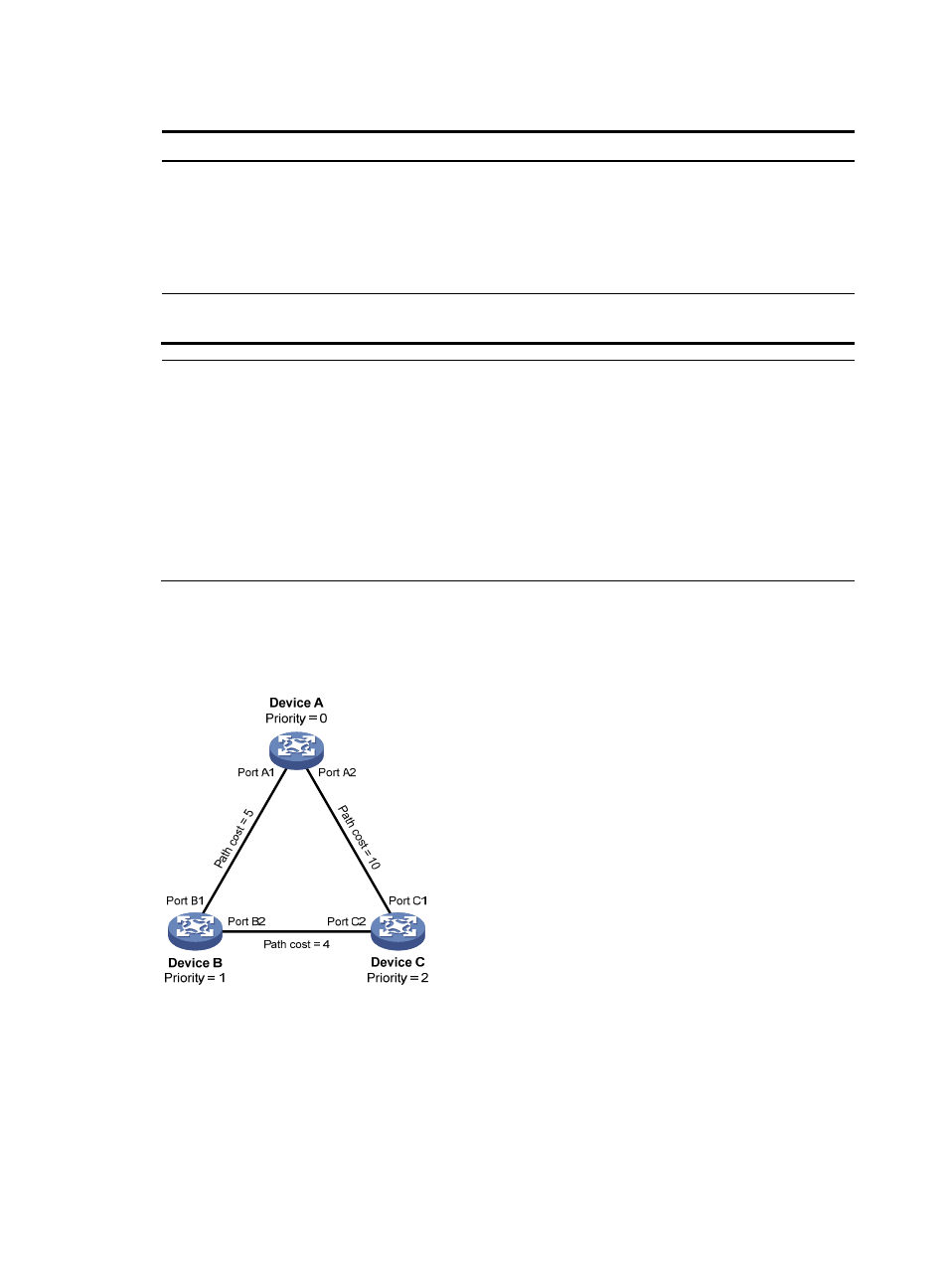H3C Technologies H3C WX3000E Series Wireless Switches User Manual
Page 62

52
Table 10 Selection of the optimum configuration BPDU
Step
Actions
1
Upon receiving a configuration BPDU on a port, the device compares the priority of the received
configuration BPDU with that of the configuration BPDU generated by the port, and:
•
If the former priority is lower, the device discards the received configuration BPDU and does not
process the configuration BPDU of this port.
•
If the former priority is higher, the device replaces the content of the configuration BPDU
generated by the port with the content of the received configuration BPDU.
2
The device compares the configuration BPDUs of all the ports and chooses the optimum
configuration BPDU.
NOTE:
The following are the principles of configuration BPDU comparison:
•
The configuration BPDU that has the lowest root bridge ID has the highest priority.
•
If all configuration BPDUs have the same root bridge ID, their root path costs are compared. For
example, the root path cost in a configuration BPDU plus the path cost of a receiving port is S. The
configuration BPDU with the smallest S value has the highest priority.
•
If all configuration BPDUs have the same ports value, their designated bridge IDs, designated port IDs,
and the IDs of the receiving ports are compared in sequence. The configuration BPDU containing a
smaller ID wins.
A tree-shape topology forms when the root bridge, root ports, and designated ports are selected.
The following describes with an example how the STP algorithm works.
Figure 14 The STP algorithm
As shown in
, the priority values of Device A, Device B, and Device C are 0, 1, and 2, and the
path costs of links among the three devices are 5, 10, and 4 respectively.
4.
Initial state of each device
- H3C WX5500E Series Access Controllers H3C WX3500E Series Access Controllers H3C WX2500E Series Access Controllers H3C WX6000 Series Access Controllers H3C WX5000 Series Access Controllers H3C LSWM1WCM10 Access Controller Module H3C LSUM3WCMD0 Access Controller Module H3C LSUM1WCME0 Access Controller Module H3C LSWM1WCM20 Access Controller Module H3C LSQM1WCMB0 Access Controller Module H3C LSRM1WCM2A1 Access Controller Module H3C LSBM1WCM2A0 Access Controller Module H3C WA3600 Series Access Points H3C WA2600 Series WLAN Access Points
